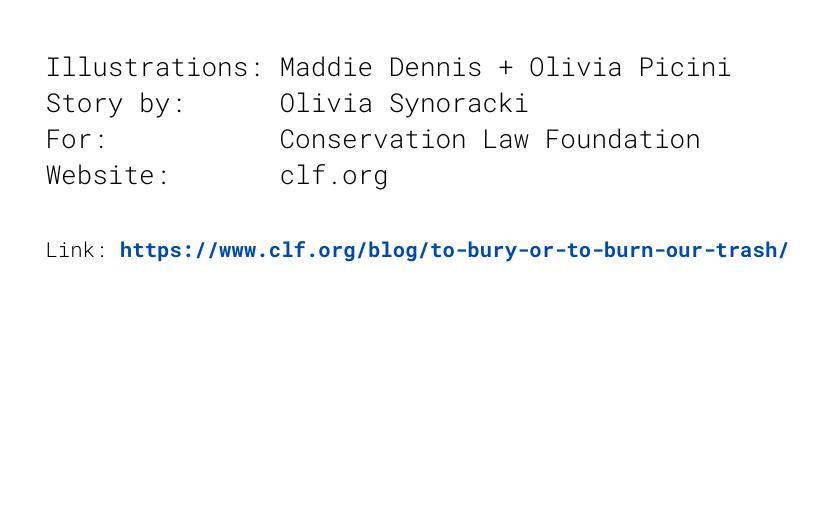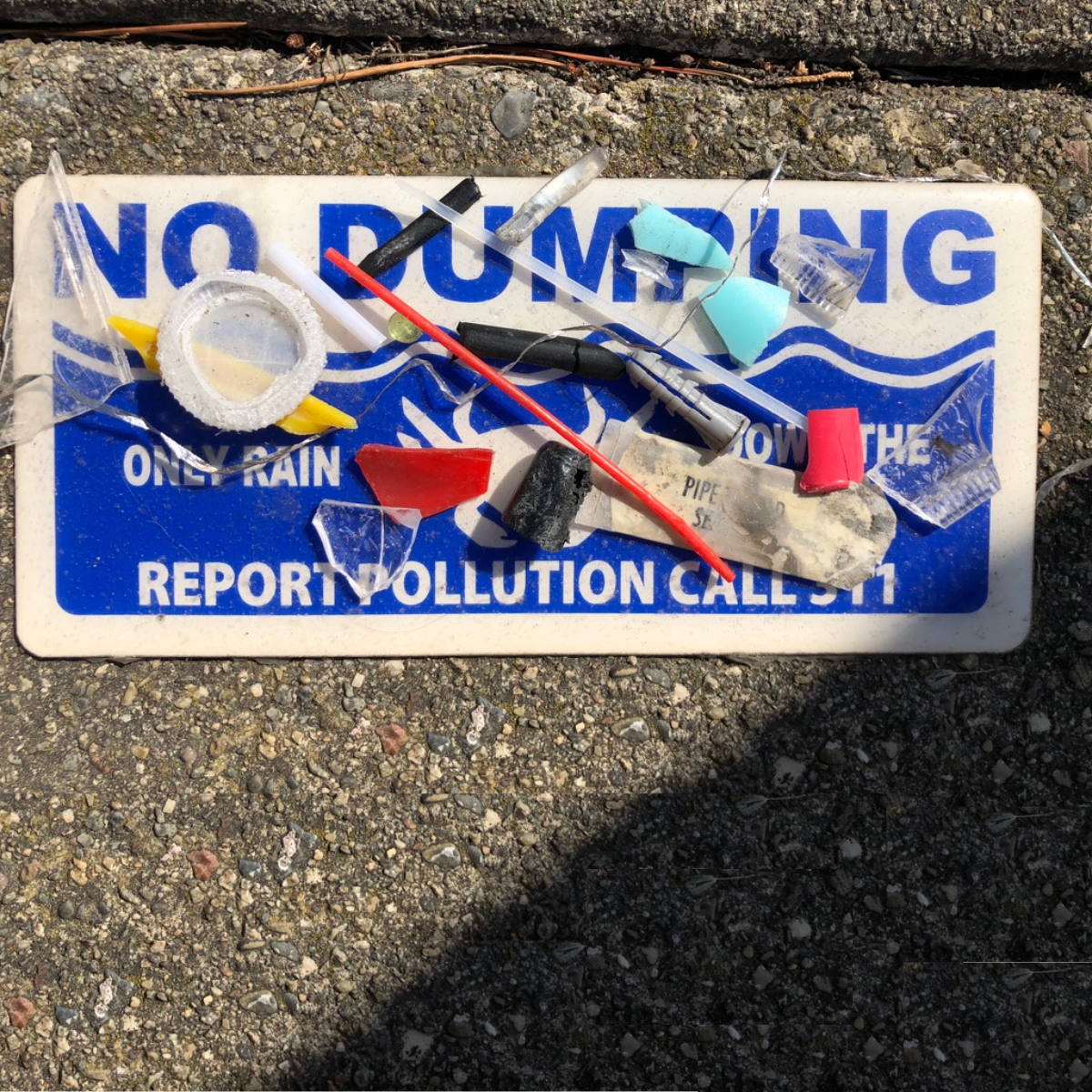zero-waste classroom pilot program
segment 1: LAST PLASTIC MARKER BOX (OR BUCKET)
1. start with A BOX OR BUCKET (NOTHING FANCY)
2. Print this pdf
3. Staple pages across the top
4. Use binder clip to attach pages to the Box or hang on a clipboard NEARBY
5. keep collection box in an easily visible + accessible spot in the classroom
6. Let students know this is where dried-up, broken pens + markers go
Hello + Thank You
for taking time to learn about our approach to guiding classrooms and students out of wasteful practices, and into common sense solutions and products, in order to end waste in the classroom.
We are introducing our approach one segment at a time, starting with the Last Plastic Marker.
Getting the fundamentals in place from the start, sets a classroom up for long term, lasting success - and that’s our goal.
Jumping ahead to purchase “zero-waste” supplies does not address underlying, deeply ingrained habits and misconceptions around plastics + waste, which sets up zero-waste goals to fall short or fail.
It’s like planting a garden before weeding + prepping the soil - it may look nice at the start, but it won’t last because the foundation is flawed.
In the space below, we lay out our essential what’s, why’s, and how’s, in order to address the most common questions and responses we have encountered over our years in the plastic-free, zero-waste activism + zero-waste e-commerce spaces.
We welcome and enthusiastically invite feedback from Students, Teachers, Parents, and anyone interested.
(form at bottom of this page)
Your participation and input improves this program, and will help to form this approach into a more useful and effective tool for schools across the country.
Thank you in advance.
Heather + Nikki
founders | waste fanatics
Question:
-
Plastic markers are not and never have been recycled into new plastic markers.
The majority of markers collected for “recycling” are incinerated (burned).
Burning, heating, or chemically treating plastic (called incineration, pyrolisis, gasification), creates toxic ash, chemicals, and emissions.
These toxic byproducts are harmful to the workers, local populations, as well as surrounding air, soil, and water.
The majority of communities around factories that burn or treat plastic waste are low income, and communities of color.
The vast majority of plastic pens + markers produced, end up ln landfills, or become land-litter at risk of washing down storm drains and into waterways.
New plastic markers + pens are continuously made (billions of them) with no feasible or sustainable solution for the permanent, toxic pollution they create.
QUESTION:
-
LANDFILLS
Landfills are like giant swimming pools filled with a mix of toxic and non-toxic solids and liquids (picture everything put into trash cans/dumpsters).
In addition to the liquids contained in the trash sent to landfills, rain and snow falling on landfills adds in millions of gallons of fresh water.
All liquids (including the fresh water from rain + snow) that end up in landfills, become contaminated by the toxins inside. The resulting toxic liquid is called leachate.
Once filled to capacity, landfills are capped and sealed with layers of materials meant to keep the toxic contents (leachate, solids, and gases) contained.
Over time, given the aging of the materials used to seal the landfill, and the way the ground around the landfill can shift, the danger increases that the landfill will leak the poison leachate into surrounding soil and groundwater.
Because landfills are toxic and sealed, it’s important to understand that nothing “composts” or goes back to nature once it’s in a landfill.















Illustrations above from the Conservation Law Fund: https://www.clf.org/blog/to-bury-or-to-burn-our-trash/
-
LAND-LITTER
Pens + markers drop out of backpacks, cars, trash cans, garbage trucks, and onto the ground.
A few of the pictures I have taken of pen + marker land-litter where I live:
-
FROM STREETS INTO STORM DRAINS, OUT TO RIVERS, LAKES + OCEANS
Over time, pieces of plastic land-litter (like pens + markers) are swept along by wind and water, into nearby storm drains.
Underground pipes discharge the untreated, unfiltered water (and all the plastic it contains) directly into local waterways. From there, the plastic continues its journey into lakes and oceans.
Plastics that have fallen onto streets are frequently run over by cars, breaking the plastic into smaller and sharper pieces.
This creates countless plastic shards that are especially dangerous to wildlife…
-
WILDLIFE
Bits of plastic are ingested by all types and sizes of animals, especially those living in or near water (birds, fish, turtles, whales…).
Because plastic does not break down, it gets “stuck” in animal’s intestines, causing suffering, malnutrition, and starvation.
Image from documentary “We’re All Plastic People Now” (PBS.org)
Image from Greenpeace.
272 pieces of plastic in the stomach of this fledgling albatross made it too full to eat.
-
HUMANS
Plastics don’t break down the way that things in nature do - Rather they break apart into smaller and smaller pieces.
This happens when plastic is crushed, dragged along rough surfaces (abraded), or photodegraded by sunlight, and then further degraded by the corrosiveness of salt water, and wave action.
The resulting micro + nano plastics are so small, they are ingested, inhaled, and absorbed through the skin, without notice.
microplastics = smaller than 0.5mm about the size of a grain of rice
nano plastics = smaller than 100 nanometres (not visible to the naked eye)
It is estimated that humans consume the equivalent of 50 plastic bags per year (or one plastic credit card per week).
WHAT CAN WE DO?
LEARN
Understanding the truth about plastics gives students the tools to engage in conversations that inform others, and can lead to change in schools, homes, colleges and workplaces.
One of the most interesting projects I ever took part in, was an initiative to spur local restaurants to swap out plastic straws for paper straws.
I (in my 40’s at the time) set up meetings with several local restaurant owners, and did my best to persuade them to make the change.
I was told that while they appreciated what I was trying to do “for the environment”, it was too expensive, and the paper straws were too flimsy.
Months later, I partnered with a local high school environmental club, and for their final club project, THEY went to the very same restaurants, carrying a bag filled with plastic straws I had picked up off of local streets, and made the same request of the same restaurant owners.
Guess what?
Every single restaurant made the switch - ON THE SPOT.
ORGANIZE
As you learn about the problems with plastics, and begin to research smarter, safer alternatives, you can and should use up many of the plastic products you already have.
Like markers + pens.
Many families have excess pens + markers at home (from prior back to school shopping trips) that they are likely to be happy to donate to their child’s classroom.
Round it all up, sort by type or color, and make them available in the classroom.
They’re already paid for - and it’s not “zero-waste” to send perfectly usable markers + pens to landfill, just to replace them with plastic-free alternatives.
Using up what you already have, buys time to consider:
+ What is actually needed in the classroom?
+ What are the smartest and safest alternatives? (we’re happy to offer suggestions)
CONTAIN + DISPOSE OF ALL PLASTIC WASTE RESPONSIBLY
To prevent plastic from becoming land-litter, and eventually ocean litter, it must be contained.
Lightweight pieces of plastic like bags, wrappers, and films - are easily carried away by gusts of wind.
This happens as trash is dumped into dumpsters, then transferred into garbage trucks, and again during transport and delivery to the landfill.
Lightweight plastics can continue to blow away in the wind (or be carried off / ingested by birds) once they’re dumped at the landfill.
Heavier pieces of plastic easily tumble out of trash cans, dumpsters, and garbage trucks (becoming land-litter) along the journey from trash can to landfill.
One of my “hobbies” is picking fallen pieces of plastic up off of the streets so they can’t wash down a storm drain.
*the days I pick up the most plastic are just after the garbage trucks have come, and loads of little un-secured pieces have fallen onto the streets.
People ask me what I do with all of the plastic pieces I pick up.
I carefully contain it before sending it to landfill.
I want to make sure the pieces I pick up, or the pieces I dispose of from my own waste/trash, are not at risk of falling out of a trash can or a garbage truck - down a storm drain - out to sea - and into an unsuspecting animal, bird, or fish.
Here is (the most) amateur stop motion video ever made - I made in 2016 to illustrate how to safely contain bits of plastic before sending them to landfill:
Use existing plastic bags (no need to purchase plastic bags for this!) to contain all bits of plastic before putting them in the trash can.
Squeeze out the air (like a space bag), compressing and trapping the plastic contents tightly within the bag, and then tie off the top.
An “existing plastic bag” is any plastic bag you already have from items purchased at a grocery store or mail order (like the ones in the video above).
-
Understanding the serious challenges and dangerous downsides of plastic recycling, has shifted our approach from “wishcycling” our plastic waste, to landfilling it in the most responsible way we can.
From there, we do our research to find the smartest plastic-free, greenwash-free alternatives, in or er to have less and less plastic to dispose of. -
None.
Aside from the toxicity around recycling processes, and the fact that “recycled” or downcycled plastics contain more toxic chemicals than virgin plastics, is the ethical dilemma of sending plastic that is collected for recycling in the United States, to developing countries like Malaysia, India, Vietnam and Kenya.
These countries do not have the recycling infrastructure to process our waste plastics, but they need money, so we pay them to take our waste, and then blame them for letting that waste (our waste) enter their waterways/oceans. -
Start by using up what you have.
Dispose of plastics safely.
Continue learning about the issues with plastics.
Beware of greenwashing.
Carefully reconsider what products and materials are needed.
Make educated purchasing decisions.
Reduce your reliance on, consumption of, exposure to plastics.
Share what you learn with others.
Get involved (links to great organizations below)
Continue learning about plastics and the fallacy of recycling:
https://www.plasticpollutioncoalition.org/learn/plastic-pollution-facts
https://www.5gyres.org/science
https://www.surfrider.org/initiatives/plastic-pollution
https://www.ehn.org/what-is-chemical-recycling
https://www.clf.org/making-an-impact/ending-plastic-pollution/
https://algalita.org/mission/
https://www.pbs.org/video/were-all-plastic-people-now-rkg2mq/
https://www.storyofstuff.org/movies/the-story-of-plastic-documentary-film/
“When discussing these technologies, we need to stop using industry lexicon and instead call out these fanciful innovations for what they are: incineration technologies hidden within an industry shell game that has nothing to do with recycling and will only incentivize petrochemical expansion and the creation of more plastic waste.
There is mounting evidence to suggest that humans are the ultimate repositories of plastic waste. In our throwaway society, we have become away. Whether through traditional incineration or nouveau ploys to combust plastic waste, false solutions like so-called advanced recycling will only move our landfills into our air. And while there is no silver bullet to our waste crisis, the best way to stop the flow of plastic pollution is to turn off the tap. Policymakers must advance progressive measures to hold producers responsible for the products they create while supporting community-based zero waste initiatives that center prevention, reduction and reuse.”
Switch to responsible alternatives going forward: Happy to help with specific recommendations, please reach out to us with the age/grade of students, and the types of projects the students will be working on.








































































